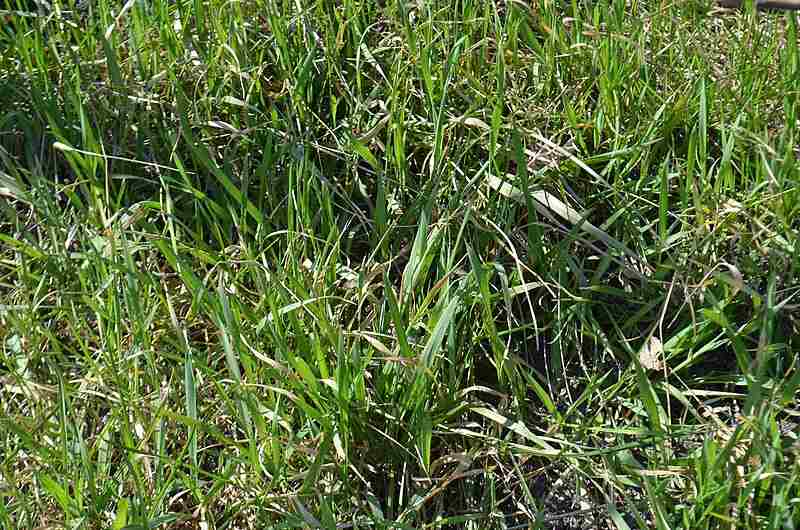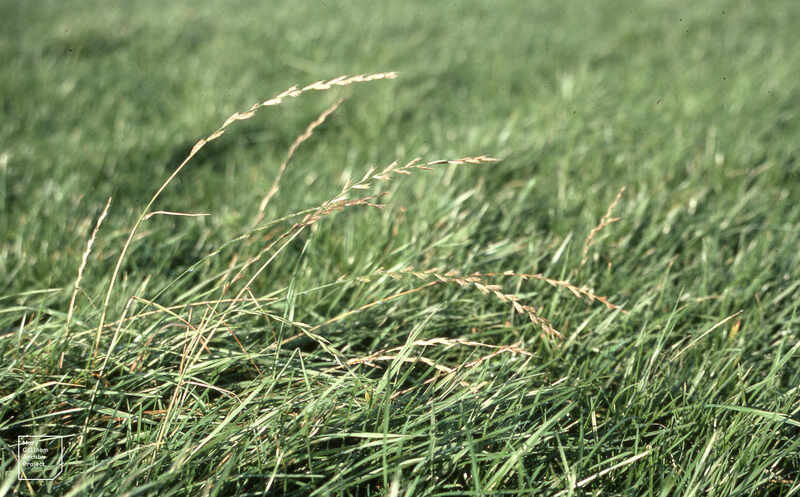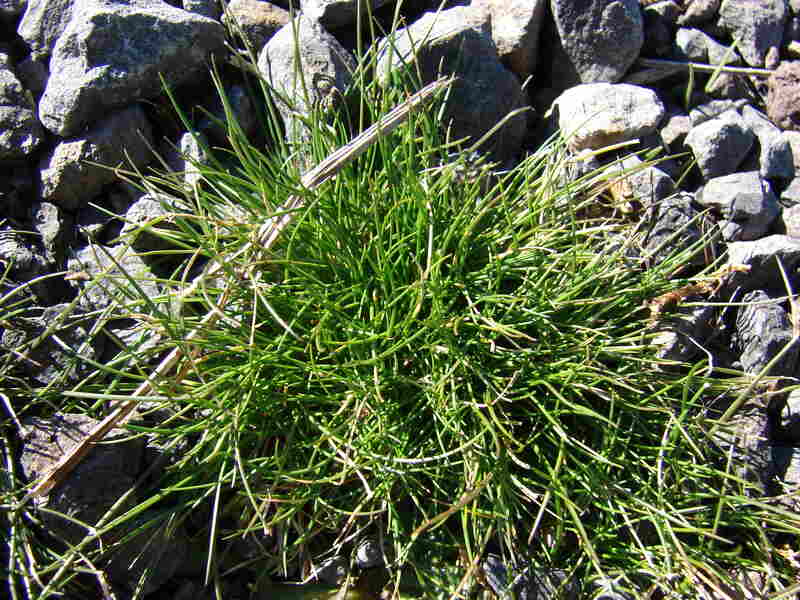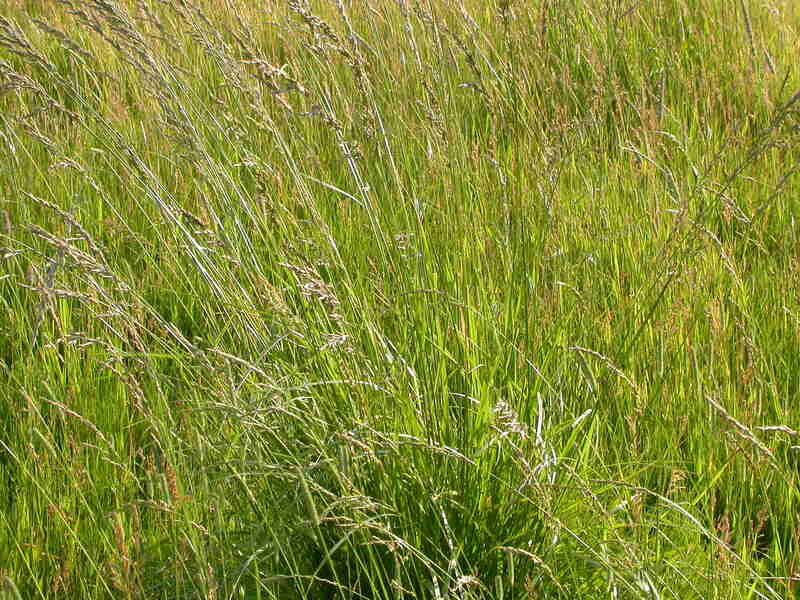The Best Grass Types For a Boston Lawn
BY JO ELLEN MEYER SHARP | APRIL 7TH, 2023 | BOSTON, LAWN CARE, MASSACHUSETTSBoston is known for its Emerald Necklace, defined by the Frederick Law Olmsted-designed system of green spaces. You can have a little bit of the Emerald Necklace in your landscape with the correct selection of the best grass types for your Boston lawn. These are recommendations for seed or sod.
In this article
- Kentucky Bluegrass
- Perennial Ryegrass
- Fine Fescue
- Tall Fescue
- Zoysiagrass
- Grass Seed Mixes
- Buying Grass Seed
- When to Sow Grass Seed in Boston
- Frequently Asked Questions about Grass
- Final Thoughts
Kentucky Bluegrass

Photo Credit: Ethan2039 / Wikimedia Commons / CC BY-SA 4.0
Want a lawn that feels perfect under bare feet? Something soft, able to withstand kid’s play or lounging on the lawn? Kentucky bluegrass is the way to go. Although it requires a little more maintenance, Kentucky blue is one of the top choices in lawns throughout the country.
Maintenance includes regular irrigation, mowing and fertilization to retain its bluish-green good looks, even in winter. Pay particular attention to irrigation. Adequate nitrogen application is important, too. Always read and follow the label directions.
If it gets too hot and dry and there’s no irrigation, Kentucky bluegrass will go dormant. Cooler weather, rain or renewed watering the lawn will revive it quickly, unless it went more than about six weeks without water.
- Classification: Cool season
- Spreads by: Rhizomes
- Shade tolerance: Moderate; prefers full sun
- Drought tolerance: Moderate
- Foot traffic tolerance: High
- Maintenance needs: High
- Mowing height: 2.5-3.5 inches
- Potential for disease: Moderate to high. Diseases include leaf spot or dollar spot. Newer types of Kentucky bluegrass have some disease resistance.
Perennial Ryegrass

Perennial Ryegrass
Photo Credit: Dr Mary Gillham Archive Project / Flickr / CC BY 2.0
Unlike Kentucky bluegrass, perennial ryegrass is a good low-maintenance alternative for your Boston landscape. Perennial rye can handle foot traffic and child play, and is great for relaxing on the deep green turf.
The blades of perennial ryegrass are medium textured rather than fine like Kentucky bluegrass. Because it germinates quickly, it sometimes is mixed in with other grass types for overseeding or to fill bare spots. Although a clump grower, it may compete with other grasses to create an odd-looking mix in the lawn. Use about a 20% perennial rye when mixing with Kentucky blue or fine fescue.
Perennial ryegrass is susceptible to fungal diseases like red thread and dollar spot. Several cultivars of perennial ryegrass contain beneficial fungal endophytes. These internal compounds help protect plants and enhance growth.
- Classification: Cool season
- Spreads by: Bunch-type, clump grower
- Shade tolerance: Low; prefers full sun
- Drought tolerance: Low
- Foot traffic tolerance: High
- Maintenance needs: Low
- Mowing height: 1.5-2.5 inches
- Potential for disease: High for fungal diseases like red thread and dollar spot.
Fine Fescue

Fine-leaf Fescue
Photo Credit: Forest and Kim Starr / Flickr / CC BY 2.0
This type includes creeping fescue, chewings fescue and hard fescue. Each can be used alone or mixed with other grasses. Fine fescues have medium to dark green narrow leaves. They tolerate acidic or low pH soil and also tolerate shade and drought.
Fine fescues do not like hot humid conditions, heavy fertilization or excess foot traffic, however. These may also get fungus disease, such as red thread. Although considered low maintenance, fine fescues do best when irrigated and mowed regularly.
- Classification: Cool season
- Spreads by: Bunch-type, clump grower
- Shade tolerance: Moderate to high; prefers at least four hours of sunlight per day
- Drought tolerance: High
- Foot traffic tolerance: Low
- Maintenance needs: Low
- Mowing height: 2.5-3 inches
- Potential for disease: Moderate; can develop disease or snow mold
Tall Fescue

Tall Fescue
Photo Credit: Matt Lavin / Flickr / CC BY-SA 2.0
As a rough-and-tumble lawn grass, tall fescue is at the top of the list. It is rooted in lawns throughout the country and appreciated for its low maintenance and durability. It tends to grow quickly in spring and fall, especially in open, sunny areas.
Although slow to establish, tall fescue requires little fertilizer and resists many pests and diseases. This makes it ideal for Boston homeowners who don’t want lawn worries. The leaf color ranges from medium to dark green with a bit of a rough. texture. Newer varieties have been developed with finer textures.
- Classification: Cool season
- Spreads by: Bunch-type, clump grower
- Shade tolerance: Moderate; prefers direct sunlight
- Drought tolerance: Moderate
- Foot traffic tolerance: Moderate
- Maintenance needs: Low
- Mowing height: 3-4 inches
- Potential for disease: Low
Zoysiagrass
The only warm-season grass that is winter hardy in the Boston area is zoysiagrass. It is available in the market, but homeowners should give it some thought before planting it.
Although it has many attributes, they may not offset other zoysia habits. For instance, zoysiagrass turns brown as soon as temperatures drop and returns to medium green when the warm season returns. In cold climates, zoysiagrass tends to be brown for a longer period than it is green.
Zoysia also spreads by under- and above-ground stems (rhizomes and stolons). It readily creeps out of its space to gardens and landscape beds and the neighbor’s yard. Your neighbor will hate it.
Zoysiagrass withstands heat, drought and foot traffic, but will thin in shade. It rarely needs to be mowed. It does need regular aeration, however. Also on the plus side, its dense growing habit discourages weeds.
Warm-season grasses like zoysiagrass grow most actively in late spring and summer when temperatures are around 75 to 95 degrees Fahrenheit. They perform best in the Southern United States.
- Classification: Warm season
- Spreads by: Rhizomes and stolons
- Shade tolerance: Moderate; most cultivars prefer full sun, others can tolerate partial shade
- Drought tolerance: High
- Foot traffic tolerance: High
- Maintenance needs: Moderate
- Mowing height: 1-2 inches
- Potential for disease: Low
Grass Seed Mixes
A good lawn and garden center will stock the type of seed that is best for your Boston lawn, but it’s important to understand that most turf grass seed is a blend of seeds. The reason there are mixes is to get a fast-germinating seed to come on first to hold soil in place while slower-germinating seeds start to grow. Usually, a mixed seed selection can be used broadly in the landscape, from moderately shady locations to full sun. Grass seed also is sold as individual types.
Buying Grass Seed
Buy the best grass seed you can find. Grass is inexpensive compared to other plants in your Boston landscape. Current grass seed products are much improved over what your parents or grandparents sowed.
Newer products have been perfected with coatings that ensure good germination, such as a mini dose of fertilizer and enough moisture to get the seed growing.
When to Sow Grass Seed in Boston
Cool-season grasses grow most actively in early spring and fall when temperatures are around 55 to 75 degrees Fahrenheit. They’re well-suited to northern climates with distinct seasons and cold winters.
The best time to sow grass seed is from mid-August to mid-September. The soil still retains summer warmth to help the seed germinate. Rains in fall also help grass seed take root and grow.
Even overseeding – sowing seed to fill in bare spots or thicken the lawn – is best down in early fall.
FAQs
If you’re a busy bee and want to save time, opt for perennial ryegrass and fescues.
Fine fescue is the best option for lawns with abundant shade.
Kentucky bluegrass and perennial ryegrass can withstand a lot of foot traffic. Zoysiagrass is also good for a busy lawn.
Fine fescue doesn’t require as much watering as other grass types. Zoysia also needs little watering.
Final Thoughts
Don’t have time to keep up with your lawn care duties? Hire a Boston lawn care pro to turn your lawn into an emerald jewel.
Main Image Credit: Unsplash